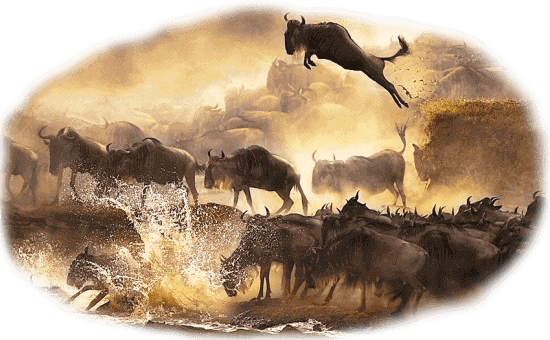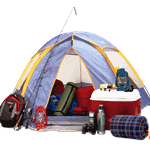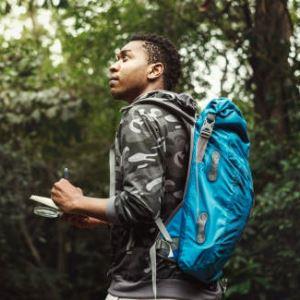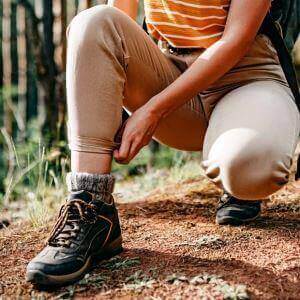 For Danish tourists dreaming of an unforgettable safari experience, Kenya is one of the top destinations in Africa. Known for its rich biodiversity, stunning landscapes, and iconic wildlife, Kenya offers something magical throughout the year. However, choosing the best time to visit can make your safari holiday even more rewarding. Understanding Kenya's seasonal weather and wildlife patterns will help you make the most of your adventure. Kenya generally has two main seasons: the dry season and the rainy season. The long dry season, from June to October, is often considered the best time for a safari. During these months, the weather is cooler and less humid, making it more comfortable for travelers from temperate climates like Denmark. Additionally, the vegetation is sparse and animals congregate around waterholes, making them easier to spot on game drives. This period is also prime time for witnessing the Great Migration in the Maasai Mara, where millions of wildebeest and zebras cross the plains in search of greener pastures. The short dry season, from January to March, is another excellent window for safari travel. The weather is warm and dry, offering good visibility for wildlife viewing. Danish tourists who prefer a quieter, less crowded experience may find this period ideal, as it falls outside the peak international travel season. Lodges and parks tend to be less busy, and you can enjoy a more serene connection with nature. While Kenya is beautiful year-round, the rainy seasons April to May and again in November pose some challenges. Heavy rainfall can make some park roads impassable and may reduce your chances of seeing wildlife. However, these months also bring lush green landscapes and fewer tourists, which might appeal to travelers seeking solitude and budget-friendly options. If your goal is to spot the Big Five lion, elephant, buffalo, leopard, and rhino your best chance is during the dry months when animals are more visible and easier to track. National parks like Amboseli, Tsavo, and the Maasai Mara offer excellent opportunities for close encounters with these iconic species. The most favorable time for Danish tourists to visit Kenya for a safari is during the dry months from June to October or from January to March. These months provide an optimal mix of pleasant weather, vibrant wildlife activity, and fewer travel disruptions due to rain. From June to October, the cool, dry climate is perfect for extended game drives and exploring Kenya's iconic national parks like Maasai Mara and Amboseli. Wildlife sightings are frequent during this time, especially as animals gather around limited water sources and open grasslands. The January to March window is equally rewarding, particularly for those seeking a quieter safari experience with less crowding. The warm, dry conditions make animal movements more visible and enjoyable for photographers and nature enthusiasts alike. Danish tourists visiting in these months can take advantage of better accommodation availability and often lower travel rates compared to peak season. Although the rainy seasons April to May and November are less ideal due to muddy terrain and limited accessibility, they do offer stunning green landscapes and more privacy for travelers willing to brave the weather. However, if your priority is comfort, convenience, and exceptional wildlife viewing, sticking to the dry months is highly recommended. For expert travel planning, below is a comprehensive Kenya safari weather guide for Danish tourists. Whether your goal is to witness the awe-inspiring Great Migration or simply to relax while watching elephants roam the savannah, using this guide ensures you choose the most rewarding time to visit. Selecting the optimal season can enhance every part of your safari experience, from wildlife sightings to overall comfort and accessibility.
For Danish tourists dreaming of an unforgettable safari experience, Kenya is one of the top destinations in Africa. Known for its rich biodiversity, stunning landscapes, and iconic wildlife, Kenya offers something magical throughout the year. However, choosing the best time to visit can make your safari holiday even more rewarding. Understanding Kenya's seasonal weather and wildlife patterns will help you make the most of your adventure. Kenya generally has two main seasons: the dry season and the rainy season. The long dry season, from June to October, is often considered the best time for a safari. During these months, the weather is cooler and less humid, making it more comfortable for travelers from temperate climates like Denmark. Additionally, the vegetation is sparse and animals congregate around waterholes, making them easier to spot on game drives. This period is also prime time for witnessing the Great Migration in the Maasai Mara, where millions of wildebeest and zebras cross the plains in search of greener pastures. The short dry season, from January to March, is another excellent window for safari travel. The weather is warm and dry, offering good visibility for wildlife viewing. Danish tourists who prefer a quieter, less crowded experience may find this period ideal, as it falls outside the peak international travel season. Lodges and parks tend to be less busy, and you can enjoy a more serene connection with nature. While Kenya is beautiful year-round, the rainy seasons April to May and again in November pose some challenges. Heavy rainfall can make some park roads impassable and may reduce your chances of seeing wildlife. However, these months also bring lush green landscapes and fewer tourists, which might appeal to travelers seeking solitude and budget-friendly options. If your goal is to spot the Big Five lion, elephant, buffalo, leopard, and rhino your best chance is during the dry months when animals are more visible and easier to track. National parks like Amboseli, Tsavo, and the Maasai Mara offer excellent opportunities for close encounters with these iconic species. The most favorable time for Danish tourists to visit Kenya for a safari is during the dry months from June to October or from January to March. These months provide an optimal mix of pleasant weather, vibrant wildlife activity, and fewer travel disruptions due to rain. From June to October, the cool, dry climate is perfect for extended game drives and exploring Kenya's iconic national parks like Maasai Mara and Amboseli. Wildlife sightings are frequent during this time, especially as animals gather around limited water sources and open grasslands. The January to March window is equally rewarding, particularly for those seeking a quieter safari experience with less crowding. The warm, dry conditions make animal movements more visible and enjoyable for photographers and nature enthusiasts alike. Danish tourists visiting in these months can take advantage of better accommodation availability and often lower travel rates compared to peak season. Although the rainy seasons April to May and November are less ideal due to muddy terrain and limited accessibility, they do offer stunning green landscapes and more privacy for travelers willing to brave the weather. However, if your priority is comfort, convenience, and exceptional wildlife viewing, sticking to the dry months is highly recommended. For expert travel planning, below is a comprehensive Kenya safari weather guide for Danish tourists. Whether your goal is to witness the awe-inspiring Great Migration or simply to relax while watching elephants roam the savannah, using this guide ensures you choose the most rewarding time to visit. Selecting the optimal season can enhance every part of your safari experience, from wildlife sightings to overall comfort and accessibility.
Seasonal Safari Travel Guide to Kenya for Danish Tourists
| Month | Weather Conditions | Wildlife Viewing Quality | Tourist Crowds |
|---|---|---|---|
| January | Warm, Dry | Good | Moderate |
| February | Warm, Dry | Good | Moderate |
| March | Warm, Some Rains | Fair | Low |
| April | Wet (Long Rains) | Poor | Low |
| May | Wet (Long Rains) | Poor | Low |
| June | Dry, Cool | Excellent | Low |
| July | Dry, Cool | Excellent (Migration) | High |
| August | Dry, Cool | Excellent (Migration) | High |
| September | Dry, Warm | Excellent (Migration) | High |
| October | Warm, Dry | Good | Moderate |
| November | Wet (Short Rains) | Fair | Low |
| December | Warm, Some Rains | Fair | Moderate |
Best Months for Danish Tourists to Go on Safari in Kenya
When planning the perfect Kenyan safari, Danish tourists should consider both the climate and wildlife activity across the year. While Kenya offers incredible safari opportunities throughout the seasons, the most rewarding experiences tend to occur during its two distinct dry periods. The long dry season, which stretches from June to October, is often regarded as the best time for a safari. Danish visitors during this period will enjoy clear skies, lower humidity, and cooler temperatures ideal conditions for spending long days on game drives. The dry environment causes wildlife to congregate around water sources, dramatically increasing the chances of spotting elephants, lions, giraffes, and even elusive leopards in the open savannah. July to September is particularly special as it coincides with the Great Migration in the Maasai Mara, offering a rare opportunity to witness one of nature’s most awe-inspiring spectacles. The short dry season, running from January through March, is another excellent time for Danish tourists. During these months, the weather is generally hot and dry, providing favorable conditions for photography and wildlife observation. Parks and lodges are typically less crowded than during the peak migration season, making this a great option for travelers who prefer a more relaxed and private safari experience. While April to May and November are considered the rainy seasons, some travelers might still find these months attractive for their lush landscapes and discounted travel rates. However, wildlife viewing can be more challenging due to the dense vegetation and reduced accessibility in certain parks. For Danish tourists planning a safari in Kenya, timing is everything. While the country offers rich safari experiences year-round, the dry seasons provide the most consistent and rewarding conditions for wildlife viewing. The longer dry season, from June to October, is considered the prime time to visit, especially for those interested in seeing the Great Migration in the Maasai Mara. During these months, animals tend to gather around watering holes due to the scarcity of rain, making them easier to spot during game drives. This period is also marked by comfortable weather conditions, with cooler temperatures and low humidity factors that are especially appreciated by travelers coming from Denmark. July, August, and September are the peak months for the Great Migration, offering unforgettable moments as millions of wildebeest and zebras move across the plains. On the other hand, the shorter dry season, from January to March, offers its own appeal. These months are warmer but still dry, and wildlife sightings remain excellent. It’s a great time for Danish tourists looking to avoid large crowds, as this period is generally quieter than the peak migration season. Photographers and nature enthusiasts can also take advantage of the clear skies and vivid scenery. Although the rainy seasons in April-May and November present more travel challenges, the lush landscapes and lower tourist numbers can be appealing to some. Still, for those prioritizing wildlife sightings and smooth travel, the dry seasons remain the most dependable choice.
How Can Danish Tourists Choose the Best Time for a Kenya Safari?
For Danish tourists planning their first safari to Kenya, choosing the right time to visit can elevate the entire experience. The timing not only affects your comfort but also determines the quality of wildlife sightings and accessibility to top safari destinations. The key is understanding Kenya's climate patterns and aligning them with your personal travel preferences. Kenya has a relatively predictable climate, characterized by two main dry seasons and two rainy seasons. The long dry season, from June to October, is often recommended for its excellent game-viewing conditions. Wildlife is easier to spot during this period as animals gather around remaining water sources. The lack of rainfall also means roads are easier to navigate, making it ideal for extensive game drives. This is also the time of the Great Migration in the Maasai Mara a spectacle that draws travelers from all over the world. The short dry season, from January to March, offers a similarly rewarding experience. The weather is generally hot and dry, and the national parks are less crowded. This time of year is perfect for those who prefer a quieter, more relaxed safari. Danish tourists can benefit from reduced accommodation rates and a more intimate atmosphere, all while enjoying high-quality wildlife viewing. The long rains in April and May and the short rains in November can be less favorable. Roads may become muddy and difficult to navigate, and the thick vegetation can make it harder to see animals. Still, these months offer lush landscapes and fewer tourists, which might appeal to off-the-beaten-path travelers. For those planning from Denmark, the ideal approach is to align your travel dates with school holidays or vacation periods that fall during Kenya's dry seasons. This strategy ensures not only favorable weather but also allows for smoother logistics and more fulfilling wildlife encounters. Whether you’re seeking the thrill of the Great Migration or the peace of a quiet game drive, the dry season in Kenya for safari from Denmark presents the most dependable and enjoyable window for travel.
Best Weather Conditions in Kenya for Danish Safari Travelers
For Danish safari travelers, understanding Kenya's weather patterns is key to planning a smooth and enjoyable holiday. Kenya’s climate varies by region but is generally shaped by two dry seasons and two rainy seasons. The weather directly affects safari logistics, visibility, and overall comfort, so picking the right time can make a significant difference. The most favorable weather conditions for a Kenyan safari occur during the long dry season from June to October. These months feature clear blue skies, minimal rainfall, and moderate temperatures, which make them ideal for extended game drives and wildlife photography. Danish tourists will find this season particularly comfortable as the cooler climate provides a pleasant escape from both the intense African sun and Denmark’s cooler months. During this time, the bush is less dense, allowing for easier animal sightings. January through March marks Kenya’s short dry season. The weather is warmer but still mostly dry, making it another excellent time for safaris. The lush green landscape left behind by the previous short rains creates a vibrant setting for observing wildlife. Because this period falls outside the peak tourist season, it offers Danish travelers a more tranquil experience in the national parks, with the added benefit of better availability and rates for accommodation. April and May bring the long rains, and November sees the short rains. These months are typically not ideal for safaris due to muddy roads and tall grasses that obscure animal sightings. However, for travelers willing to accept the trade-offs, these rainy months offer a different kind of beauty lush greenery, blooming flora, and fewer tourists. The best weather conditions for Danish safari travelers in Kenya are found during the dry seasons, particularly from June to October and January to March. These periods offer a blend of cooler temperatures, clearer skies, and minimal rainfall, all of which enhance the overall safari experience. During these months, the roads in national parks are typically dry and easy to navigate, making long game drives more enjoyable and less stressful. In addition, the sparse vegetation and the tendency of animals to gather around water sources make wildlife much easier to spot. For travelers from Denmark, the climate during Kenya’s dry season is especially comfortable. The cooler days during the June to October window provide relief from Denmark’s chillier months, while the dry heat in January to March is ideal for escaping the northern European winter. The predictable weather also supports better travel logistics, with fewer delays and disruptions. Choosing to travel during Kenya’s dry seasons allows Danish safari-goers to maximize both comfort and wildlife encounters. Factoring in seasonal patterns not only helps with planning but also ensures a smoother and more memorable adventure. With clear skies, open landscapes, and thriving animal activity, the dry season is a standout choice for a successful safari holiday.
What Climate Factors Should Danish Safari Travelers Consider?
Planning a safari trip to Kenya from Denmark requires more than just booking flights and lodging. For Danish travelers, understanding the climate is key to ensuring a smooth and enjoyable experience. Kenya's weather directly impacts wildlife visibility, travel conditions, and your overall comfort while on safari. Because Kenya lies near the equator, it has two dry seasons and two rainy seasons. Knowing how each season affects your journey will help you make the most of your African adventure.
- Long Dry Season (June to October): This is the most popular time for Danish tourists to visit Kenya. The weather is cool and dry, which makes it comfortable for long game drives. With little vegetation and animals gathering near water sources, wildlife sightings are excellent. Roads are easily passable, and the skies are generally clear, which also benefits photographers.
- Short Dry Season (January to March): Another good window for safari travel, this period offers warm, dry conditions. Though slightly hotter, it’s ideal for avoiding the large tourist crowds of the Great Migration months. Lodges often offer lower rates, and the post-rain greenery adds color and contrast to your safari photos.
- Long Rainy Season (April and May): These months bring heavy rainfall, often making travel difficult due to muddy, impassable roads. Wildlife can be harder to spot, but the scenery becomes lush and vibrant. Budget-conscious travelers may appreciate lower prices and fewer crowds during this season.
- Short Rainy Season (November): Short, sporadic rains make conditions less predictable, but travel is still possible. The vegetation is thick, making wildlife spotting more challenging. However, the dramatic skies and blooming flora make it visually rewarding for those seeking something different.
Top Wildlife Viewing Seasons in Kenya for Danish Tourists
 For Danish tourists seeking unforgettable safari encounters, understanding the top wildlife viewing seasons in Kenya is essential. Kenya’s abundant biodiversity and open savannahs make it one of the world’s premier destinations for observing wild animals in their natural habitat. However, the timing of your visit can dramatically influence the success of your safari. Seasonal patterns affect animal behavior, vegetation density, and your chances of seeing iconic species like the Big Five: lion, elephant, buffalo, leopard, and rhino. The best wildlife viewing period generally falls during the dry seasons. The long dry season, from June to October, is the most popular and reliable time for safaris. During this period, the lack of rain causes animals to gather around rivers and waterholes, offering optimal visibility. Vegetation thins out, making it easier to spot wildlife on open plains. This is also the season of the Great Migration in the Maasai Mara, when over a million wildebeest and zebras cross into Kenya from Tanzania a bucket-list event for many travelers. From July to September, the Maasai Mara is at its most dramatic. Danish tourists can witness predator-prey interactions, river crossings, and huge herds spread across the savannah. This spectacle also increases the chance of seeing the Big Five within a concentrated area, making it one of the most rewarding times to visit. January to March the short dry season is another excellent time for wildlife viewing. The landscape is still fairly open, and many animals remain active. Fewer tourists during this period also means quieter parks and more intimate wildlife encounters. It’s a great season for photographers seeking uninterrupted shots in golden light. April to May and November mark Kenya's rainy seasons. These months are less ideal for safaris due to thick vegetation and muddy terrain, which can hinder game drives. However, some travelers may still enjoy these times for birdwatching and the lush scenery. To get the most from your safari, plan your visit during Kenya's dry months, when conditions are at their peak for wildlife visibility and overall comfort. During the dry seasons particularly June to October and January to March you'll benefit from easier travel logistics, less vegetation blocking views, and greater concentrations of animals around water sources. These advantages are especially useful for photography, ensuring clear, well-lit shots without environmental obstructions. For Danish tourists, aligning your travel plans with these periods not only enhances the quality of your safari experience but also makes the entire journey more efficient. Fewer logistical complications, better accommodation availability, and smoother game drives contribute to a more relaxed and memorable holiday. If you're eager to experience dramatic scenes like river crossings during the Great Migration or hope to capture intimate moments with wildlife in the golden light of dawn, timing your safari during these optimal windows is essential. Whether you're aiming to witness the Great Migration in the Maasai Mara or want to increase your chances of spotting all of the Big Five, the dry seasons offer the best balance of weather, accessibility, and animal activity. Kenya's wildlife calendar truly holds something exceptional for Danish tourists at the right time of year.
For Danish tourists seeking unforgettable safari encounters, understanding the top wildlife viewing seasons in Kenya is essential. Kenya’s abundant biodiversity and open savannahs make it one of the world’s premier destinations for observing wild animals in their natural habitat. However, the timing of your visit can dramatically influence the success of your safari. Seasonal patterns affect animal behavior, vegetation density, and your chances of seeing iconic species like the Big Five: lion, elephant, buffalo, leopard, and rhino. The best wildlife viewing period generally falls during the dry seasons. The long dry season, from June to October, is the most popular and reliable time for safaris. During this period, the lack of rain causes animals to gather around rivers and waterholes, offering optimal visibility. Vegetation thins out, making it easier to spot wildlife on open plains. This is also the season of the Great Migration in the Maasai Mara, when over a million wildebeest and zebras cross into Kenya from Tanzania a bucket-list event for many travelers. From July to September, the Maasai Mara is at its most dramatic. Danish tourists can witness predator-prey interactions, river crossings, and huge herds spread across the savannah. This spectacle also increases the chance of seeing the Big Five within a concentrated area, making it one of the most rewarding times to visit. January to March the short dry season is another excellent time for wildlife viewing. The landscape is still fairly open, and many animals remain active. Fewer tourists during this period also means quieter parks and more intimate wildlife encounters. It’s a great season for photographers seeking uninterrupted shots in golden light. April to May and November mark Kenya's rainy seasons. These months are less ideal for safaris due to thick vegetation and muddy terrain, which can hinder game drives. However, some travelers may still enjoy these times for birdwatching and the lush scenery. To get the most from your safari, plan your visit during Kenya's dry months, when conditions are at their peak for wildlife visibility and overall comfort. During the dry seasons particularly June to October and January to March you'll benefit from easier travel logistics, less vegetation blocking views, and greater concentrations of animals around water sources. These advantages are especially useful for photography, ensuring clear, well-lit shots without environmental obstructions. For Danish tourists, aligning your travel plans with these periods not only enhances the quality of your safari experience but also makes the entire journey more efficient. Fewer logistical complications, better accommodation availability, and smoother game drives contribute to a more relaxed and memorable holiday. If you're eager to experience dramatic scenes like river crossings during the Great Migration or hope to capture intimate moments with wildlife in the golden light of dawn, timing your safari during these optimal windows is essential. Whether you're aiming to witness the Great Migration in the Maasai Mara or want to increase your chances of spotting all of the Big Five, the dry seasons offer the best balance of weather, accessibility, and animal activity. Kenya's wildlife calendar truly holds something exceptional for Danish tourists at the right time of year.
When Can Danish Tourists See the Big Five on a Kenyan Safari?
For Danish tourists planning a safari in Kenya, spotting the Big Five lion, elephant, buffalo, leopard, and rhino is often at the top of the wishlist. To maximize the chances of these unforgettable encounters, timing is critical. Kenya's wildlife viewing is seasonal, and each period brings its own unique opportunities. The dry seasons, from June to October and January to March, offer the most reliable conditions for wildlife observation. During the long dry season, June to October, animals tend to congregate around shrinking water sources. The bush is less dense, making it easier to spot and photograph wildlife. This season also coincides with the world-famous Great Migration, a massive movement of wildebeest and zebras through the Maasai Mara. This period is especially favorable for seeing predators in action, as they follow the herds in search of prey. January to March, the short dry season, is also excellent for wildlife sightings. With fewer tourists around, Danish travelers can enjoy quieter, more intimate game drives. The weather is hot and dry, and animals are still quite active, providing great opportunities for photography and extended viewing. While the rainy seasons April to May and November bring lush greenery and fewer tourists, they are less ideal for wildlife viewing. Tall grasses and muddy roads can make safaris more challenging. However, birdwatchers might still enjoy this time due to the presence of migratory species. To experience the best wildlife migration season in Kenya for Danish tourists, plan your trip between July and September. This period marks the height of the Great Migration, when massive herds of wildebeest and zebras move through the Maasai Mara in search of greener pastures. It’s not only a spectacular wildlife event, but also a prime opportunity to see predators such as lions, leopards, and cheetahs in action. River crossings are among the most dramatic moments of the migration. As thousands of animals plunge into crocodile-filled rivers like the Mara, the raw power of nature is on full display. This time of year is ideal for photographers and wildlife enthusiasts hoping to capture rare, high-adrenaline scenes. Danish tourists visiting during this peak window benefit from the combination of excellent weather, high wildlife density, and the chance to witness some of Africa’s most iconic moments. Accommodation fills up quickly during these months, so early planning is essential. Safaris in July, August, and September are in high demand, but they offer the richest wildlife experiences Kenya has to offer. For Danish travelers seeking an unforgettable, once-in-a-lifetime safari, this season provides the most thrilling and rewarding adventure possible.
FAQs About the Best Safari Season in Kenya for Danish Tourists
Planning a safari from Denmark to Kenya is exciting, but many Danish travelers are unsure about when exactly to go. The safari experience depends heavily on seasonal weather, wildlife movement, and crowd levels. Kenya has distinct dry and rainy seasons that shape the best time to travel. With the right timing, Danish tourists can enjoy cool, clear weather, better visibility for wildlife sightings, and unforgettable moments like the Great Migration. Below are answers to common voice search-style questions that Danish tourists ask when planning their safari trip to Kenya.
- What Months Are Best for Danish Tourists to Visit Kenya? The most recommended months are June to October and January to March. These are Kenya's dry seasons, with little rainfall and excellent visibility. Wildlife gathers near waterholes, and game drives are more comfortable and productive. July to September also brings the Great Migration.
- Can I Visit Kenya in the Rainy Season? Yes, but expect challenges like muddy roads and less wildlife visibility. April-May and November are rainy, which can limit your mobility. However, you’ll enjoy greener landscapes, fewer tourists, and lower prices great for birdwatchers or off-peak adventurers.
- Is the Great Migration Worth Seeing for Danish Safari-Goers? Absolutely. It happens between July and September in the Maasai Mara and is one of the world’s most dramatic wildlife events. Danish tourists visiting during this period will witness mass animal movements and predator-prey interactions in spectacular fashion.
- What’s the Best Time to See the Big Five in Kenya? Dry seasons offer the best chance to see the Big Five: lion, elephant, rhino, buffalo, and leopard. The sparse vegetation during June to October and January to March makes sightings easier, especially around watering holes and open plains.
- When Is Kenya’s Weather Most Comfortable for Danish Tourists? June to October offers cool and dry weather, very comfortable for travelers from Denmark. January to March is warmer but still dry, making it a great escape from the Danish winter. Avoid rainy months if comfort is a priority.
- Are National Parks Crowded During the Best Safari Seasons? Yes, especially July to September. Danish tourists visiting during this peak migration period should book early. If you prefer solitude, the January to March dry season is less busy but still offers excellent wildlife viewing.
- Are Safari Costs Higher During Peak Wildlife Seasons? Yes, prices rise during peak months, especially during the Great Migration. Book early to secure availability and better rates. Shoulder months like June or October may offer good wildlife and slightly reduced pricing.
- What Wildlife Can I See Outside of the Migration Season? Plenty. Kenya's wildlife is present year-round. Lions, elephants, giraffes, zebras, and hippos can be seen even outside migration months. The dry season remains the best for visibility, but parks are never empty.
For Danish tourists, timing a safari trip to Kenya is key to enjoying a fulfilling adventure. Whether your goal is to witness the Great Migration, see the Big Five, or enjoy quiet game drives through stunning landscapes, choosing the right season matters. The dry seasons of June to October and January to March offer the best weather, easiest travel, and most concentrated wildlife activity. Planning around these months ensures better logistics, smoother game drives, and more remarkable sightings. Visiting in the peak migration months (July-September) allows for once-in-a-lifetime moments, while January to March provides a quieter, more personal safari experience. Rainy seasons may appeal to budget travelers or birdwatchers, but can be unpredictable for general safaris. Use this guide to align your travel goals with the most suitable season. A well-timed safari offers more than just photos it provides lasting memories, dramatic scenes, and the peaceful beauty of Kenya's wild spaces. With the right planning, Danish tourists can experience a safari holiday that exceeds all expectations.






